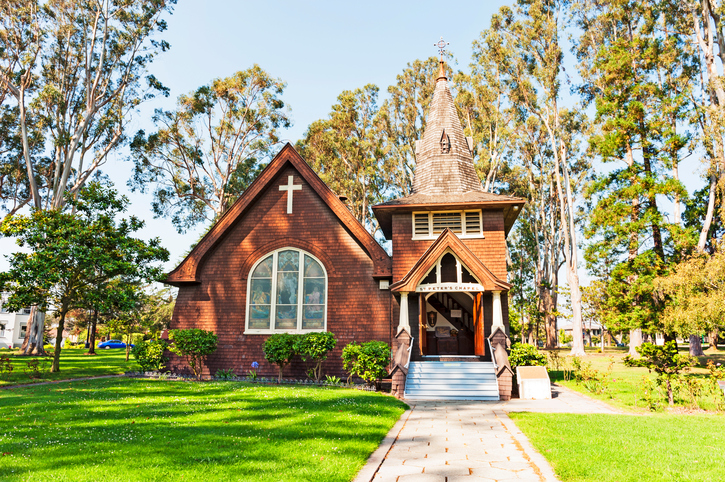Touring Mare Island
On Thursday, January 26, 18 naval history buffs traveled from Paradise Valley Estates to Mare Island, the U.S. Navy’s first permanent base on the West Coast, to spend the day. At the museum (in the former pipe shop), the group met their guide who began by explaining the site’s unique history.
The island was named after a single UA (Unauthorized Absence) horse from General Vallejo’s command who was observed grazing happily on what had previously been called Flat Island. Admiral David Farragut as Commandant developed the base and shipyard. In the history of Mare Island, 16 submarines and 392 surface ships were built and 4,000 damaged vessels were repaired. (I once saw a World War II photograph of the Napa River at Mare Island with 90 ships harbored there.)
A former commandant requested ship captains deploying to distant lands return with flowers, bushes and trees from their ports-of-call to be planted among the 13,000 dependent family homes and many shop buildings that once stood on Mare Island.
Our tour proceeded to the 7,500 square-foot, former Commandant’s Residence on Admiral’s Row, which included 12 similar-sized mansions. The homes were constructed following the 1898 earthquake that demolished the previous brick officers’ quarters. (I was invited to raise my family in one of these homes while stationed as chaplain there with the eight ammunition ships of deploying Service Squadron Three, but declined because without servants the house would require too much dusting, also in favor of raising my children in Concord through elementary, middle, and high schools during four tours of duty.
Saint Peter’s Chapel fascinated us. The 21 stained glass windows, 19 of which were fabricated by Tiffany, comprised one of the largest such collections. Our guide explained the unique methods Tiffany used to vary colors in his glass. The guide also explained that the chapel began as an Episcopal church and is now a naval interfaith chapel and how its usage, pipe organ and other acquisitions were established under a determined naval chaplain. The wooden structure’s inclined ceilings include a number of engraved memorials of military heroes. One is for two Medal of Honor recipients, Roman Catholic chaplains, one of whom was both my colleague and my relief in Vietnam: Fr. Vincent Capodonno (a Maryknoll).
The tour returned to the museum for lunch and afterward we viewed the four drydocks where many vessels were built and repaired. A display of a Patrol Boat River (PBR) inside the museum commemorated the Naval Inshore Operations School (NIOTS) at Mare Island, where those who fought the various riverine craft in the canals off the Mekong and Bassac Rivers in the Vietnam Delta were trained in the sloughs that surround the agricultural islands of Solano County.
At days’ end, the bus departed by way of the huge former Naval Hospital facility, which is now leased by Touro (Medical) University. PVE resident, Lt. Colonel Mary “Bunny” Cox, was on Touro’s faculty for 15 years.
Today, Mare Island is a mixed-use master- planned community being developed through a partnership between the City of Vallejo and Lennar Mare Island LLC.



